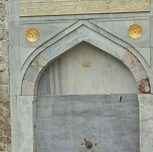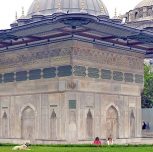The Valens Aqueduct stands in Istanbul, in the quarter of Fatih, and spans the valley between the hills which are today occupied by Istanbul University and the Fatih Mosque. It is a creation of the late Roman and the early Byzantine time. It is uncertain as to when the aqueduct’s construction began, but it is mentioned in certain sources that it was completed eithe during the reign of Emperor Valens (364–378CE) or of Hadrianus (117–138CE) whose names it bears. The aqueduct was later repaired during the rule of Emperor Justinian II (576), Konstantinos V (741–775), and Basileios II (1019). After the 11th century, and during the siege and invasion of the city, it received a large amount of damage.
During the 6th century, the Valens Aqueduct was used to provide water to the palaces of Istanbul, the Ahilleus Bath, and the Cistern. Nevertheless, according to Ruy Gonzáles de Clavijo, a Castilian diplomat who traveled to Constantinople en route to an embassy in 1403, the aqueduct was also used to water the gardens. After the conquest of Istanbul in 1453, Sultan Mehmet II repaired the whole water supply and added new arches to the structure in order to attempt to solve the water shortage problem of the city. During the Ottoman period, it was also repaired several times. The repairs and the addition of new lines and arches to the water-supplying net continued during the reign of Bayezid II (1447/48-1512), Suleiman I (1494-1566), and Mustafa II (1664-1703). These restoration works made a sufficient impact on the ability of the Valens Aqueduct to reach the present day.
It is thought that the Aqueduct of Valens had a length exceeding 1000 meters during the early Byzantine period, but today it had an average length of 971 meters and a maximum height of about 28 meters (63.5 meters above sea level). A great part of the Valens Aqueduct was destroyed and only the part located on Atatürk Boulevard has survived today. H. Prost, who prepared the structural plan of Istanbul, enabled vehicles to proceed through the Valens without causing any damage during World War II. The part of the Valens Aqueduct located on Atatürk Boulevard was cleaned and strengthened by the Istanbul Metropolitan Municipality in 1988. This historical structure was restored between 1990 and 1993 by Doğan Kuban and Ş. Akıncı.










